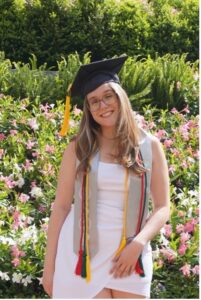Deciding Between PA and MD
Hi! My name is Helen Ji and I’m a 5th year biochemistry major applying to medical school right now! Here, I’ll be discussing how I decided on the premed path with my friend Victoria Wawryszuk, who is a Northeastern alumni who will begin attending the Massachusetts College of Pharmacy and Health Sciences for a PA degree in January!
What were your majors?
Helen: I majored in biochemistry and got a minor in ethics
Victoria: I majored in biology and got a minor in psychology
Did you know what you wanted to do when you got to college?
Victoria: When I was applying to college I was very into the idea of med school but my high school counselor had known a few PAs and told me about how cool it was to be a PA! I was interested in the situational advantages of being a PA and had known of it before going to college, and I definitely knew I wanted to go into medical related things when I started at Northeastern.
Helen: When I was in high school, I had spent a lot of time volunteering in my local hospital’s hospice unit and I had experience in medical billing, so I knew I wanted a medical degree but I wasn’t sure about the dual-degrees like MD-PhD or MD-masters or anything, so I definitely kept in mind the other opportunities I could pursue when I arrived at Northeastern to decide on those things.
What experiences did you have that led you to decide on a career path?
Victoria: My first co-op was at a pharmaceutical company in industry, and I loved having the lab experience! I had considered doing a masters or a PhD, and I felt kind of stuck at some points because I wasn’t enjoying it. I ended up deciding against the research track because I wasn’t super in love with it and wanted to see a clinical setting. In my second co-op at Adams Street Dermatology, I realized that I loved the patient interactions, what the PA did, and I loved the relationships that the PAs could establish with the patients. I realized that I preferred day-to-day clinical interactions over working in a lab.
Helen: I started out volunteering in the ER at Massachusetts General Hospital, and I loved the idea of having day-to-day clinical interactions with patients. After working in multiple labs, I got involved with the academic research side of medicine and really found a passion for oncology. I also got to shadow the clinical fellows who did research while practicing clinically, and I loved how well they were able to integrate both research and medicine into their careers. I decided on applying to schools for just an MD, and I might end up adding a masters later for public health or clinical research.
What coursework required for PA and MD school?
Victoria: Every PA school varies a lot, but there are lots of basics like biology, chemistry, biochemistry, and math. There’s definitely school-specific coursework, so look into each program that you’re interested in to make sure you fulfill what they require.
Helen: Same with medical school, the coursework really varies from school-to school but generally there are some overlapping requirements. I would say that most med schools require biology, inorganic chemistry, organic chemistry, physics, and biochemistry. Some schools also require or recommend behavioral and social sciences coursework, calculus, biostatistics/statistics, and English.
What exams are required for applications?
Victoria: Some schools require the GRE, some other schools are required to take the PA-CAT test now but it’s definitely school specific. At the same time, there are also schools getting rid of the standardized test altogether, and I didn’t have to take any exams to go to MCPHS.
Helen: All medical schools require the MCAT, which tests on coursework completed as a premedical student. Many schools require CASPER which is a situational judgement test that assesses personal and professional qualities. Some schools are also starting to require the AAMC PREview which is a multiple-choice situational judgement test.
What do med schools and PA schools actually teach?
Victoria: PA schools are 2-3 year long programs, where the first 1-2 years is didactics and students are in school learning about different types of clinical settings, anatomy, some schools have cadaver labs somewhat similar to med schools, and students learn how to take patient examinations. In the last year, students are in clinical settings doing rotations. We have a certain set of rotations we need to do and have electives to do to pick a specialty.
Helen: Medical schools are usually 4 years, where the first two years usually teach anatomy and physiology and pathology and pharmacology, and also teach the skills of interviewing and examining patients. In the third and fourth years, students usually go on clinical rotations and gain experience in different fields before deciding on a specialty to apply to residency.
How much does each school cost?
Victoria: Each program varies slightly, but on average $100,000 total
Helen: Medical school is around 80-90k a year for 4 years, some schools also offer in-state tuition
What do MDs and PAs actually do?
Victoria: PAs practice either alongside a physician or consulting the physician provide direct patient care, usually through conducting physicals, performing general procedures, and treating illnesses. When I worked in a dermatology clinic, PAs had their own set of patients they saw and ran through exams independently, whether it was a full skin scan or checking on skin lesions rashes, PAs can diagnose and treat the same way a doctor can. While PAs practice medicine independently, they are always hired to work under the supervision of a physician.
Helen: Physicians with an MD become board certified in their respective specialties after completing residency, then work to diagnose and treat injuries or illnesses and address health maintenance. Most of a clinical physician’s work is to examine patients, prescribe medications, and perform operations on patients while supervising PAs and nurses. I’ve also shadowed physicians also choose to continue pursuing research (usually clinical or public health research) after medical school as physician-scientists.


